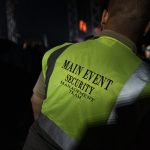SIA Training consists of numerous modules, one of those includes Physical Intervention Training. This part of the course is aimed at providing professionals and SIA candidates with a large range of non-violent handling skills which will allow them to handle common situations that may involve physical contact within a licenced premises.
What is Physical Intervention Training?
While the Physical Intervention Training modules don’t focus on complete techniques that cover every possible scenario, it focuses on a solid foundation of knowledge and skills which will help an SIA operative drastically reduce any kind of risk to staff and customers during any conflict.
The Physical Intervention Training modules consist of:
- Understanding the legal and professional implications of physical interventions.
- Knowing how to reduce the risk of harm when physical intervention skills are used.
- Understanding how to use non-pain related physical skills to protect others and yourself from assault
- Knowing how to use standing, holding and escorting techniques, which are non-painful and include restrictive and non-restrictive techniques.
- Follow up with good practice after physical intervention encounters.
Any front-line security operative’s training is incomplete without proper conflict management training. This module is generally taught after the legal and theoretical matters have been covered, and only when the use and functions of a security management team become relevant, conflict management is a very important component of a functioning front-line security team.
Physical Intervention in The Industry.
Door Staff, more commonly known as Bouncers, are the primary face of this industry and are often in place for providing some deterrent to subconsciously compel the public into behaving. However, there are some situations where physical action needs to be taken against those who fail to behave according to the rules of the licences premises.
The entire concept of using force, however, remains the final resort in any type of conflict management. SIA training further details that even in cases where physical intervention is totally unavoidable it must be applied with only a reasonable force and with only the required degree to prevent further conflict.
It’s noted that the possibility to intervene physically in any conflict without resorting to aggression is totally possible.
The SIA emphasises that nobody, including security officers, are above the law and lays importance that there are laws and rules that govern physical intervention as well as the entire idea of conflict management. Using only a reasonable amount of force, that too only when totally necessary, ensures that security officers to remain on the right side of the law, while carrying out their day to day security activities within licensed premises.
All aggressive situations need the knowledge to be handled properly and Physical Intervention training aims at delivering this training to the private security individuals. Involving knowledge delivery as well as practical training the entire training teaches that an aggressive situation can also be dealt with equally well by taking a step back and adopting a non-aggressive stand.
Restraining vs control
Any form on Physical Intervention may also involve the use and proper implementation of simple restraining actions which can be used by the security professionals when restriction or controlling of an overly aggressive person is highly essential in order to prevent an incident.
Being a totally non-aggressive undertaking, it does need the use of some amounts of force but it also provides the violent individual’s the opportunity and the chance to evaluate their current mindset and the violent actions they were about to perform. In many cases the flared up individual realises about the mistake they were about to commit and settles down into a more proper tone.
These are judgemental issues and each security professional needs to be able to apply the same as and when necessary.
The whole application to has to be timed properly so as to reduce the chances of any damage and conflict occurring in the first place. This in itself is the key to intervention training without inflicting any kind of pains.
It is not that no ejections are ever required and even in extreme circumstances when such steps are required to be undertaken, no aggression should be exerted by the security professionals. In case any individual is not calming down / getting overly aggressive, back-up should be called for and the person needs to be properly restrained without applying pain / too much of force and under no circumstances inflicting any kind of violence. Proper application of physical intervention requires you to use minimal force and subject minimal pain during restriction.
The correct study and application of this principle is extremely important for everyone who has chosen security as a profession because failing to meet proper guidelines and rules can result in a case being filed and individuals who happen to cross the limits can face criminal charges along with losing their jobs.
The module of Physical Intervention intends to train a candidate with available and proper means of non-violent options which can help deal with common issues in a much better and safe method. Seeking to provide a solid foundation based upon which the security professionals can deal with aggressive visitors effectively.




